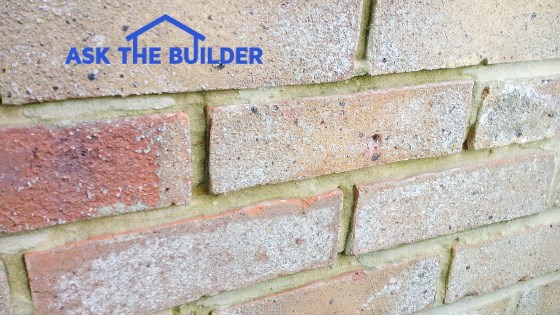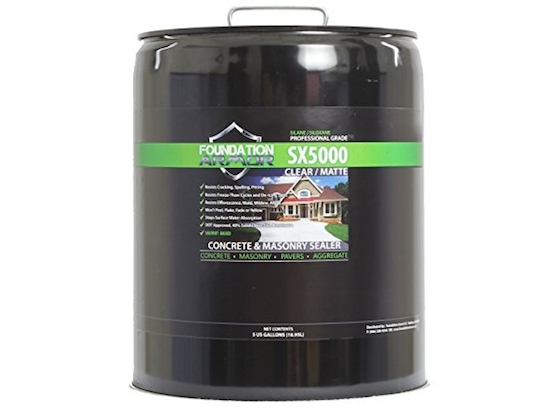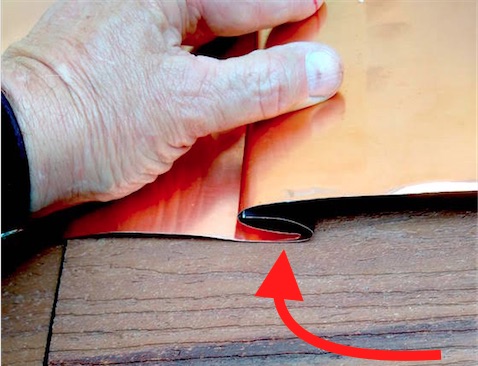Brick Veneer Leakage

Brick Veneer Leakage | See those vertical mortar joints? Water pours through them in wind-driven rainstorms. A magic sealer can solve the problem. Look BELOW for the one I'd use. (C) Copyright 2020 Tim Carter
Brick Veneer Leakage - The Source: Vertical Head Mortar Joints
DEAR TIM: I'm preparing to have a new home built. I am considering brick veneer. However, I have heard stories about leaks in new brick homes. Is there any truth to these stories? Does it have anything to do with the inexpensive black plastic flashing I see used by many builders? Can you do something to prevent these leaks? N. T.
DEAR N.T.: The horror stories you are hearing are true. Thousands of new homeowners are plagued by leaks in their brick veneer homes. Autopsies performed on these walls usually indicate major deficiencies with the wall flashings. Not only is the material inferior, but also the manner of installation. The flashing material you are talking about is virtually useless.
Related Link:
Brick Leaks - Amazing Clear Sealer Solution Here
Do All Brick Walls Leak?
Brick walls, especially brick veneer (common in residential construction) can and will leak. Water can easily enter a brick wall if the design, construction, materials, and/or maintenance is substandard.
Where Does the Water Leak Through?
Water commonly enters a brick wall between the mortar and the actual brick. When brick mortar is mixed with sand and water, tiny crystals begin to grow. These crystals interlock with the brick. The greater the amount of crystals, the more water-resistant your brick wall will be. If the wet mortar dries too quickly, few crystals will grow. Hot weather conditions, brick which is too dry, or windy weather can cause this to happen.
What is the Best Leak-Proof Mortar?
Modern, premixed mortars can also contribute to water penetration. Some do not have the properties of older mortars. Years ago, brick masons mixed their own mortars on the job site. They used different combinations of Portland cement and lime. Go back to the late 1800s and masons only used hydrated lime and sand for brick mortar. This is the best mortar of all. Lime is a unique ingredient. It reacts over long periods of time with water and carbon dioxide. This process actually can heal tiny cracks through which water tries to enter brickwork.
What Else is Needed to Stop Leaks?
Flashings are required to prevent water from becoming a problem in your new home. These membranes, when properly installed, divert water from the inside of brick walls back to the outside. There are numerous materials that can be used, the more common being plastics, vinyls, copper, and combination flashing. You can also apply a clear solvent-based sealer to help stop leaks after the house is built.

This is a magnificent silane - siloxane water repellent that soaks into the mortar and brick. CLICK or TAP HERE or THIS IMAGE NOW TO ORDER IT.
CLICK or TAP HERE to get FREE QUOTES from local painters that can apply the above sealer.
What is the Best Brick Flashing?
This copper that can be bent with ease and soldered is the best flashing to use with brick. Employ flat-locked seams where two pieces of copper lap over one another. CLICK or TAP HERE to purchase this amazing copper flashing.

Here are two pieces of copper that are interlocked to make a flat seam. The next step is to hammer them flat and solder them with a fine-tipped butane torch. Copyright 2020 Tim Carter
Where are Flashings Installed?
Flashings must be installed at the base of all walls, beneath window and door sills, and lintels. The flashings must be used in conjunction with weepholes that allow the collected water to exit the brick. Recent studies have shown that vinyl and thin plastic become brittle and fail in as few as 5 to 10 years. Often these same materials are not properly sealed at overlapping joints or at outside and inside corners. Water can pour through these seams and enter your house in as little as 1 month after construction! The combination flashings often made using thin copper or polyethylene and modified asphalts seem to offer a high degree of protection.
Can Mortar Cause Problems?
Mortar must not be allowed to fall behind the wall as it is being built. This can clog the well-placed weep holes. Newer weep hole protection products like Mortar Net WallDefender™ prevent this trouble should you employ a sloppy bricklayer. Consider using them as well.